In Her Words, Through Her Eyes
Archives and Special Collections shares women's voices from 1881 and 1938
In honor of Women’s History Month, we’re highlighting primary source accounts from two of our mini collections in Special Collections, Stockton Woman’s Diary and California, Here We Come…Travelogue. These accounts give a voice to women who lived in Northern California or traveled through Northern California prior to 1950.
All But A Name: Stockton Woman’s Diary (1881)
The first primary account is known as the Stockton Woman’s Diary. The woman who wrote this diary remains unnamed but we learn much about her in 179 pages of handwritten entries.
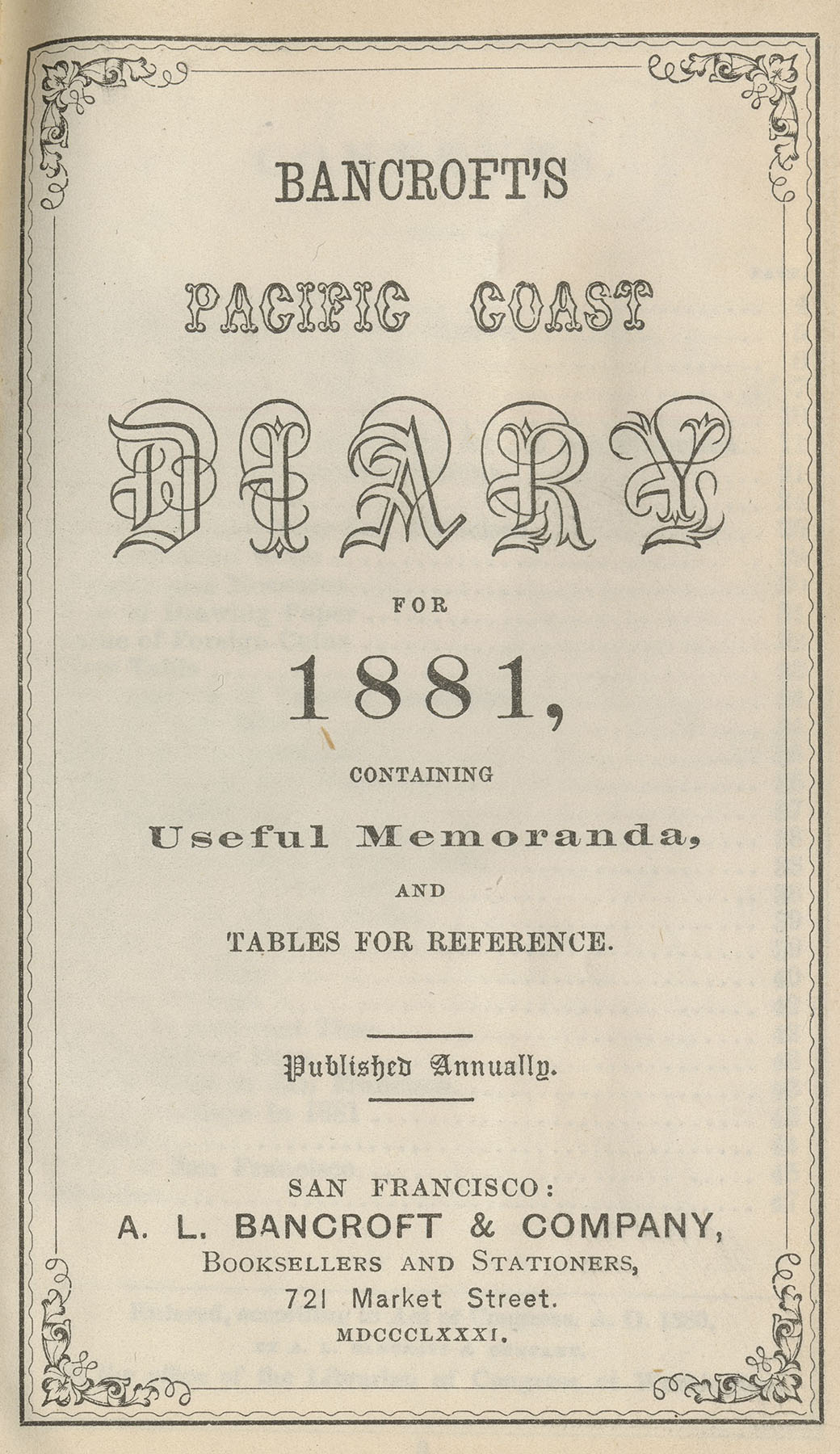
This diary includes an entry for each day of her life in the year 1881. For example, an entry on January 7, 1881 notes that she had a party in the evening, in celebration of her 23rd birthday:
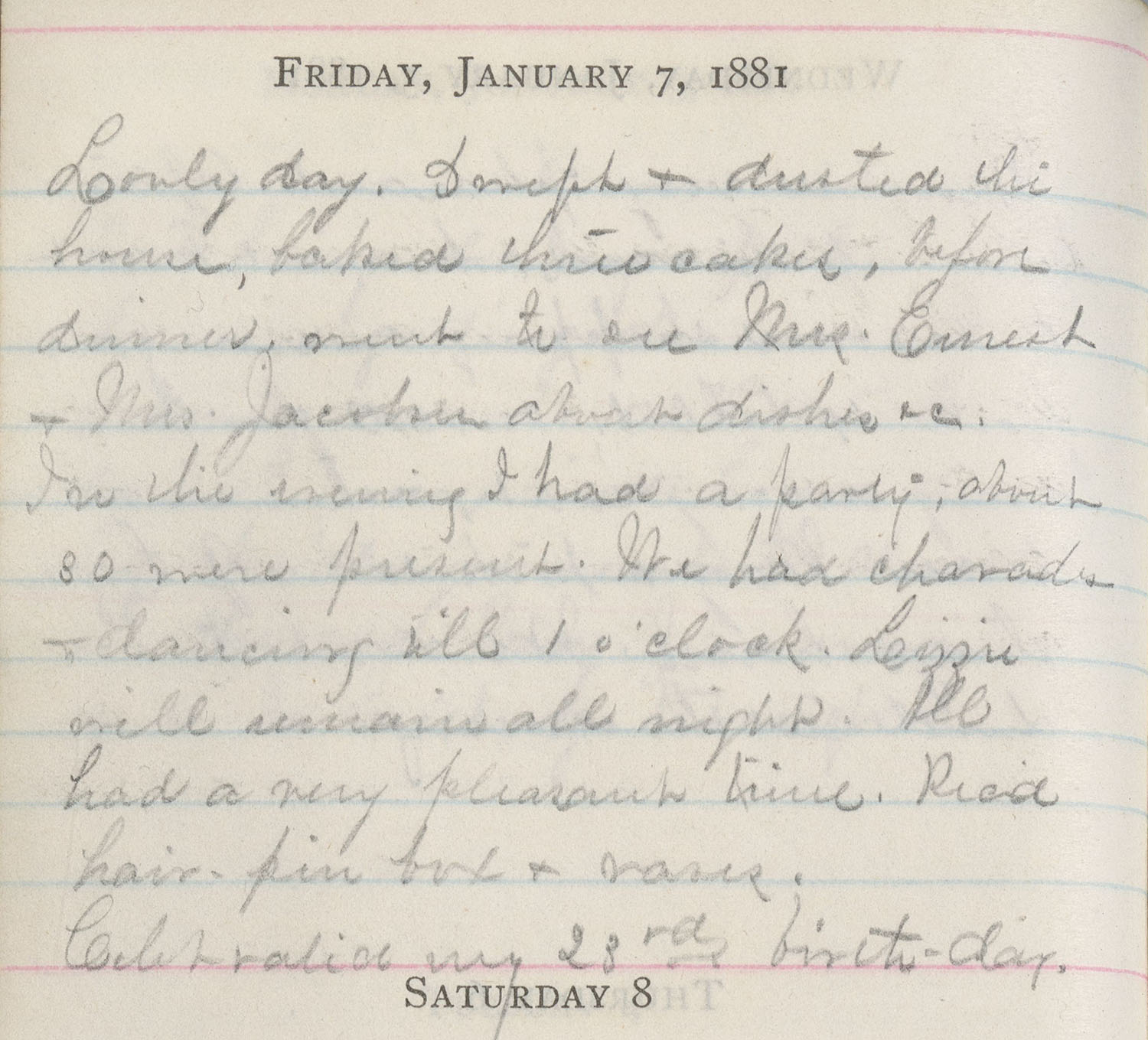
…80 people were present. We had charades and dancing till 1 o’clock…All had a very pleasant time.”
— Stockton Woman’s Diary
Shedding light on life, career in 19th century California
Much of her diary documents the everyday activities of her life, including going for walks, shopping, calling on friends, receiving visitors, and playing games such as charades. We also learn that she was in the habit of taking food to sick friends, writing and receiving letters, cooking, baking, cleaning, and much more.
If you wondered if she had a profession, she tells us that she was an educator. On February 10, 1881, she begins her entry with “Taught all day…very tired tonight.” Many of her diary entries thereafter, begin with “taught all day” and we catch glimpses of her professional activities. In later diary entries, she describes more of her teaching activities in depth as the days progress with some having more detail about her pupils and their lessons.
From this woman’s diary, we also learn about her relationship with local, well-known historical figures and places in Northern California. For example, on May 4, 1881, she notes that “Captain C. M. Weber died today.” Captain C. M. Weber was a prominent pioneer in the San Joaquin Valley and the founder of Stockton, California. On May 7, 1881, our unknown author notes that she attended “high mass in Catholic church [for] C. M. Weber.”
From her diary entries, we learn that she was also in Sacramento, California in May. This is where we learn about her relationship with a “Mr. and Mrs. Gallatin,” whom she mentions frequently. Using historical context, we can safely assume that she writes about entrepreneurs Albert Gallatin and Clemenza Rhodes Gallatin and their family. On May 10, 1881, the woman writes about her experience visiting the Gallatin Mansion on 16th and H street (known today as the historic Governor’s Mansion). She claims that “Mr. Gallatin’s residence is the handsomest in this city. Everything is beautiful.” She returns to the Gallatin residence on June 9, 1881, when she mentions “after breakfast I had an interview with Mr. Gallatin.” Her entries thereafter document her employment in the Gallatin household, still under the role of educator.
In the end, despite the lack of a name, this woman’s diary is rich in many details that tell us more about her life in 19th-century California. Her voice remains imprinted on pencil and paper, leaving a glimpse of her life for the generations that follow to discover.
Four Women, 3166 Miles to California: a 1938 Travelogue
California Here We Come… Travelogue is a typescript manuscript, photo album, and scrapbook chronicling the automobile trip of four Oregon women: Lillian, Maude, Anny, and Frances. The women were traveling to Los Angeles, California for an event by the Order of Amaranth but stopped in many places on their way there.
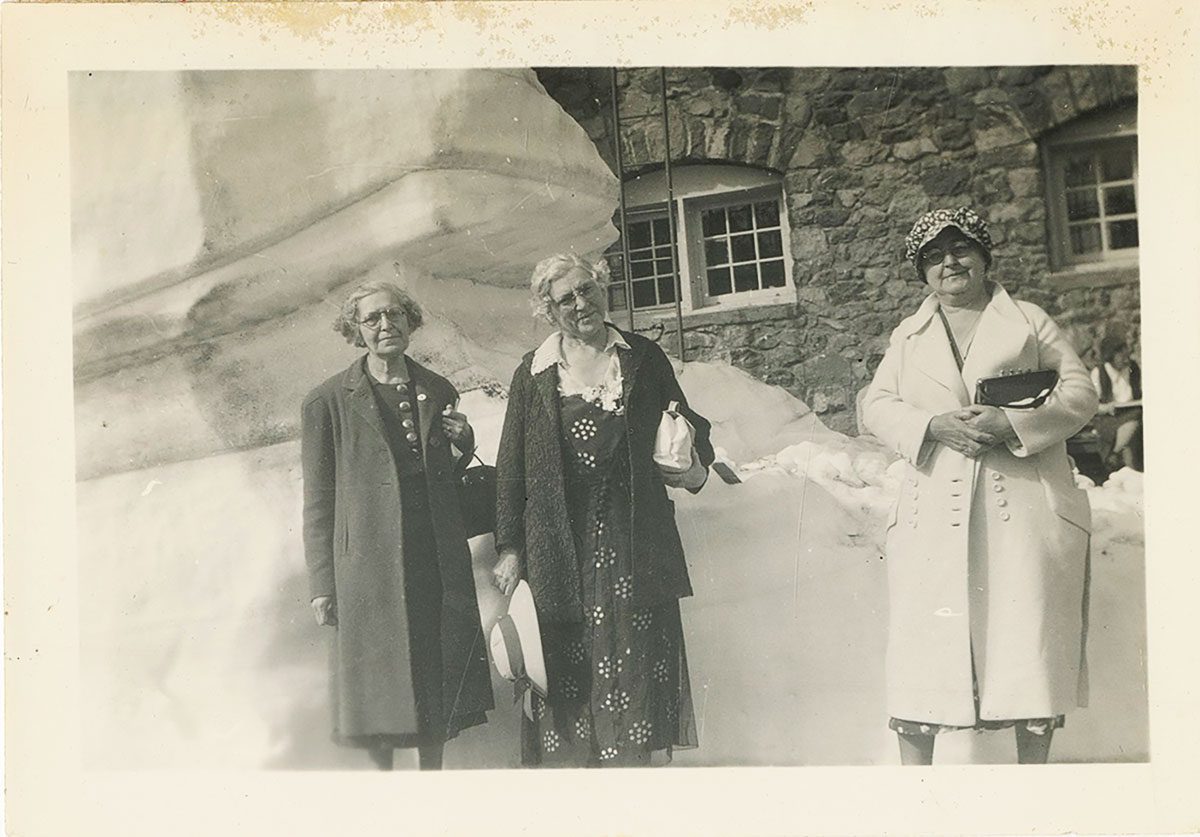
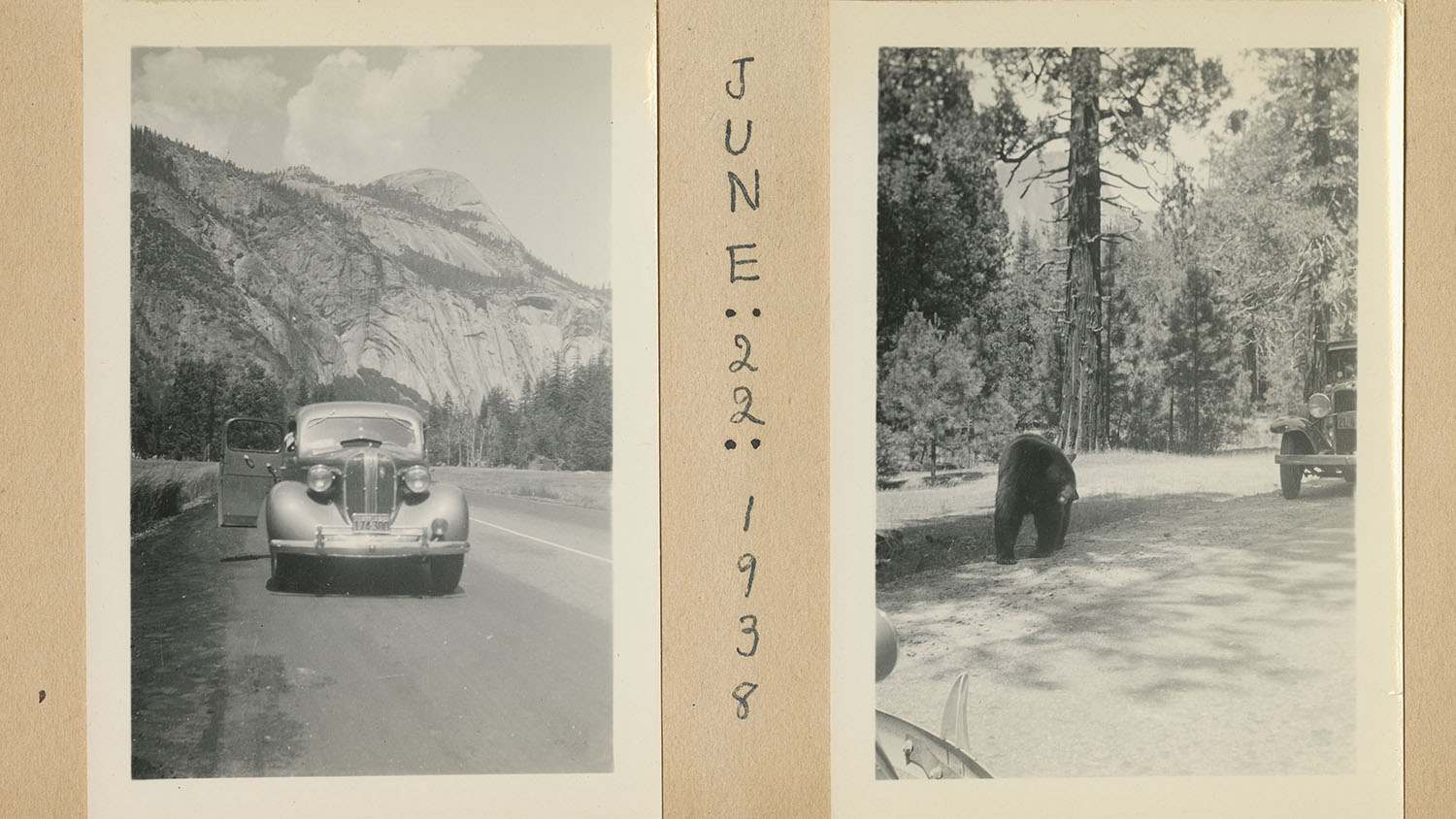
In this travelogue, there are detailed, typed recollections of the places that the women stopped to see while they traveled through California, neighboring areas like Reno, Nevada, and a brief trip to Tijuana, Mexico. There are also many photographs, postcards, and other keepsakes that document the stops on the trip. Overall, the women noted that they traveled 3, 166 miles.
On the beautiful morning of June 19th, 1938, four Honored Ladies set out by automobile to attend the Supreme Council, Order of Amaranth, at Los Angeles, California. As we drove along, we decided that each one of us should be given a special duty. Frances, the First Lady, was appointed Supreme Wheel-Twister; Maude, the Supreme Assistant Wheel-Twister; Anny, Grand Supreme Spender and Lillian, Supreme Brain Trustee.”
— Travelogue, Page 1 / MC318:2
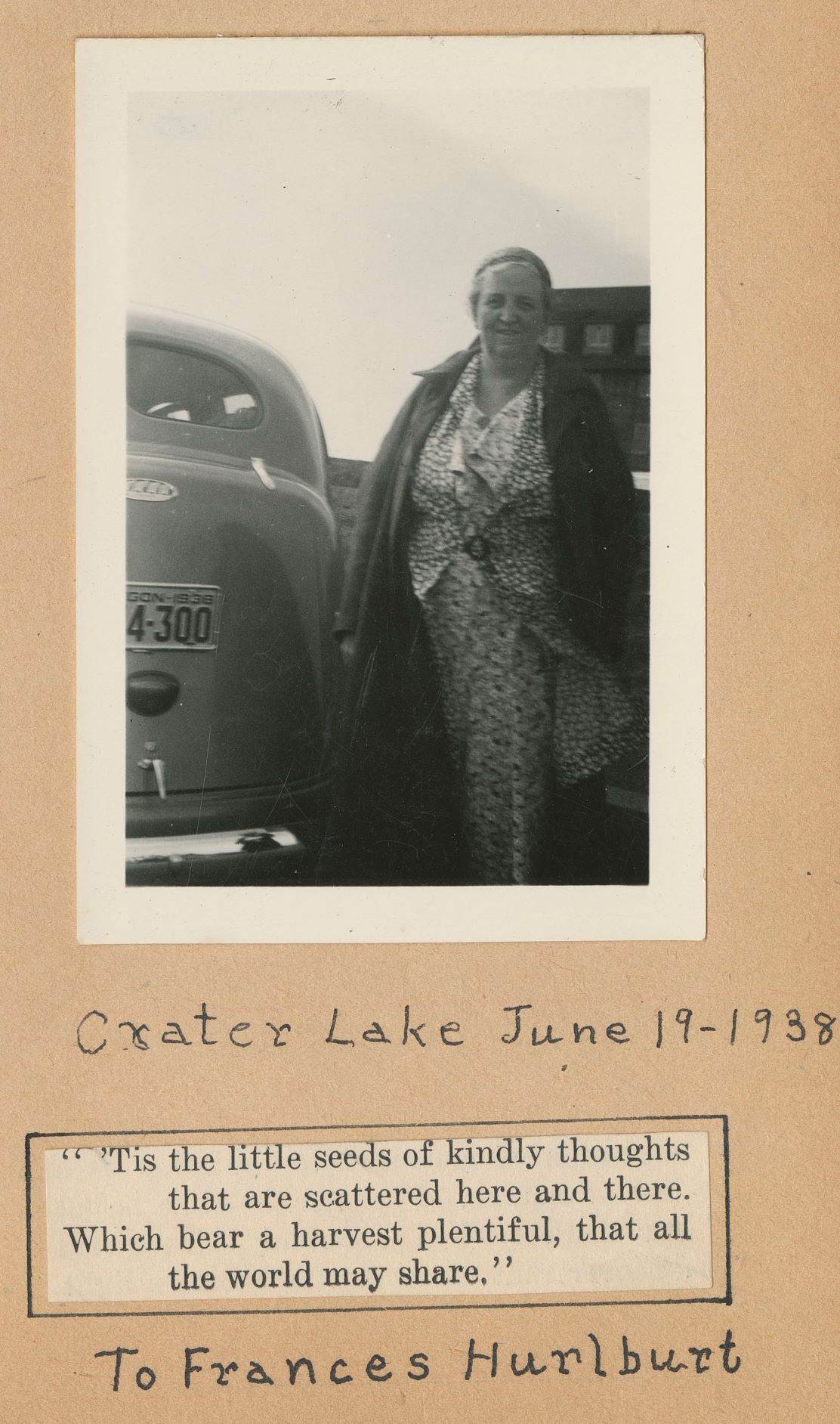
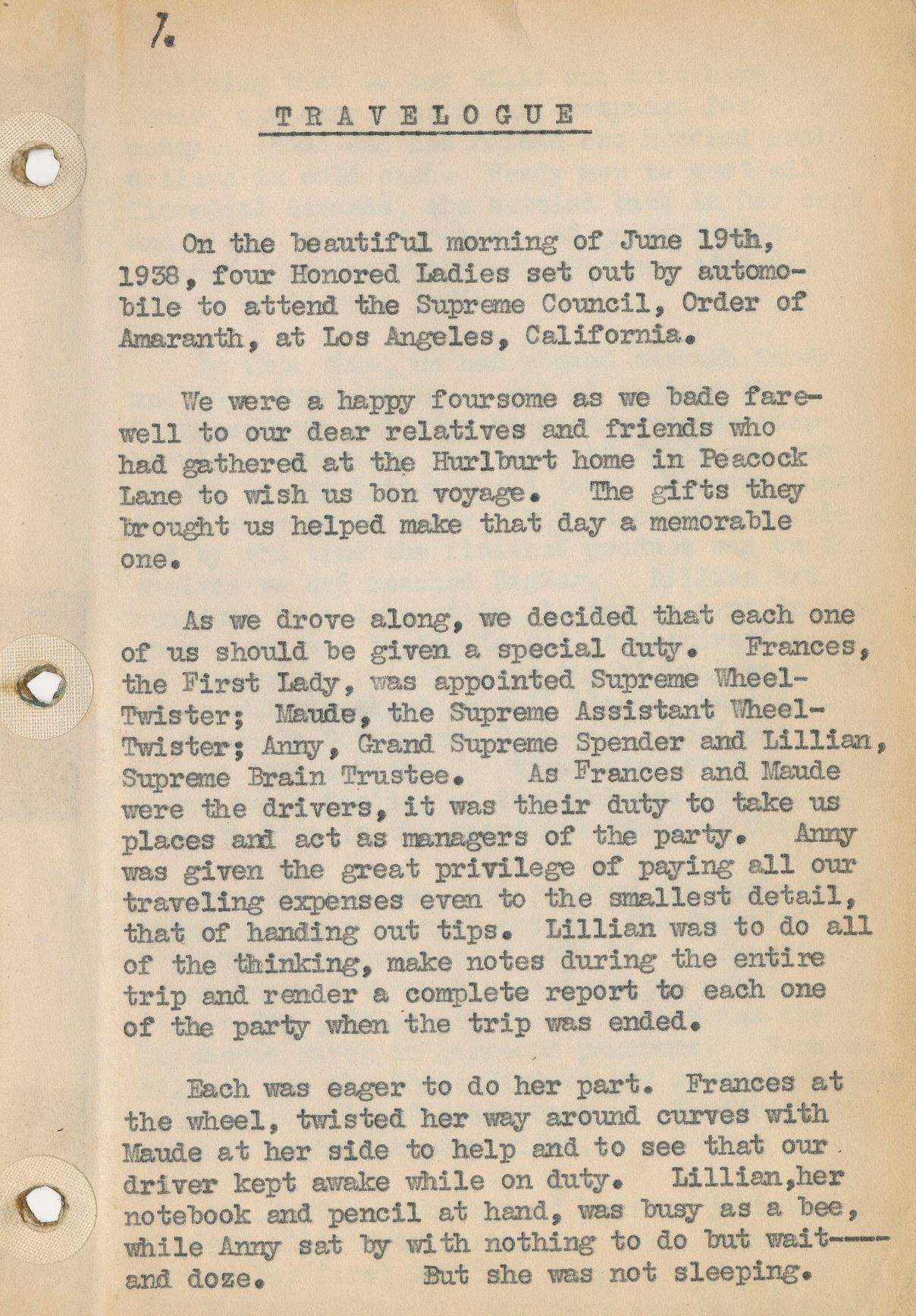
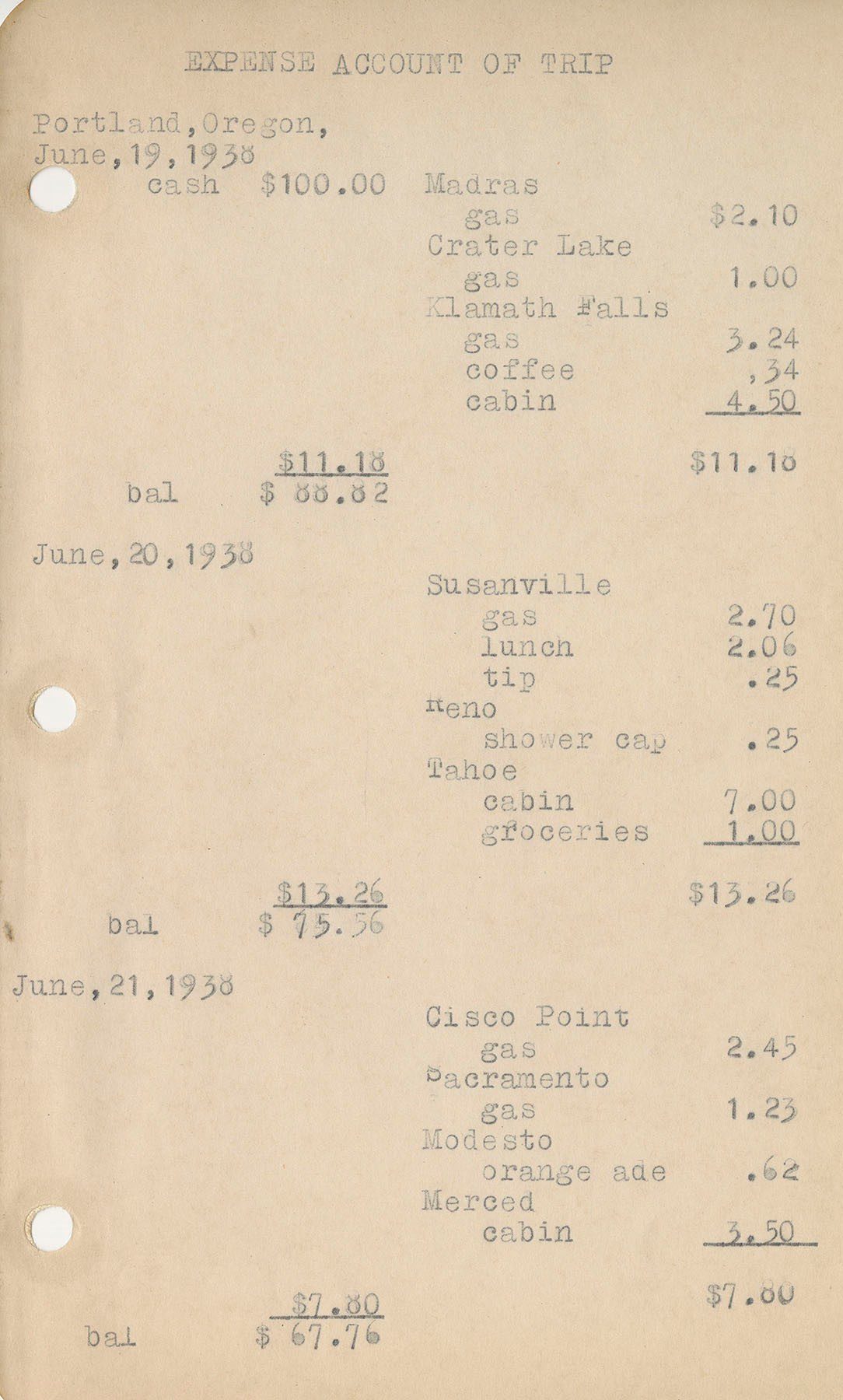
From the typed account, we learn about their individual duties on the trip. We can safely assume that the content from the travelogue was arranged for this final format primarily by Lillian. With help from her companions, the typed account helps document how the women spent their time while traveling and how they handled food, lodging, and other traveling necessities in 1938. This information is also supplemented by a detailed expense account of the purchases they made.
Snippets of postcards, drawings, and keepsakes
The mixed-media keepsakes that Lillian added to help document their trip also provide visual aids that supplement the written account of their journey. For example, on June 20th, 1938, our four travelers passed through Sacramento, California, and picked up a few keepsakes. In this instance, the keepsakes give us additional information about Sacramento’s image and the impression it left on travelers and tourists.
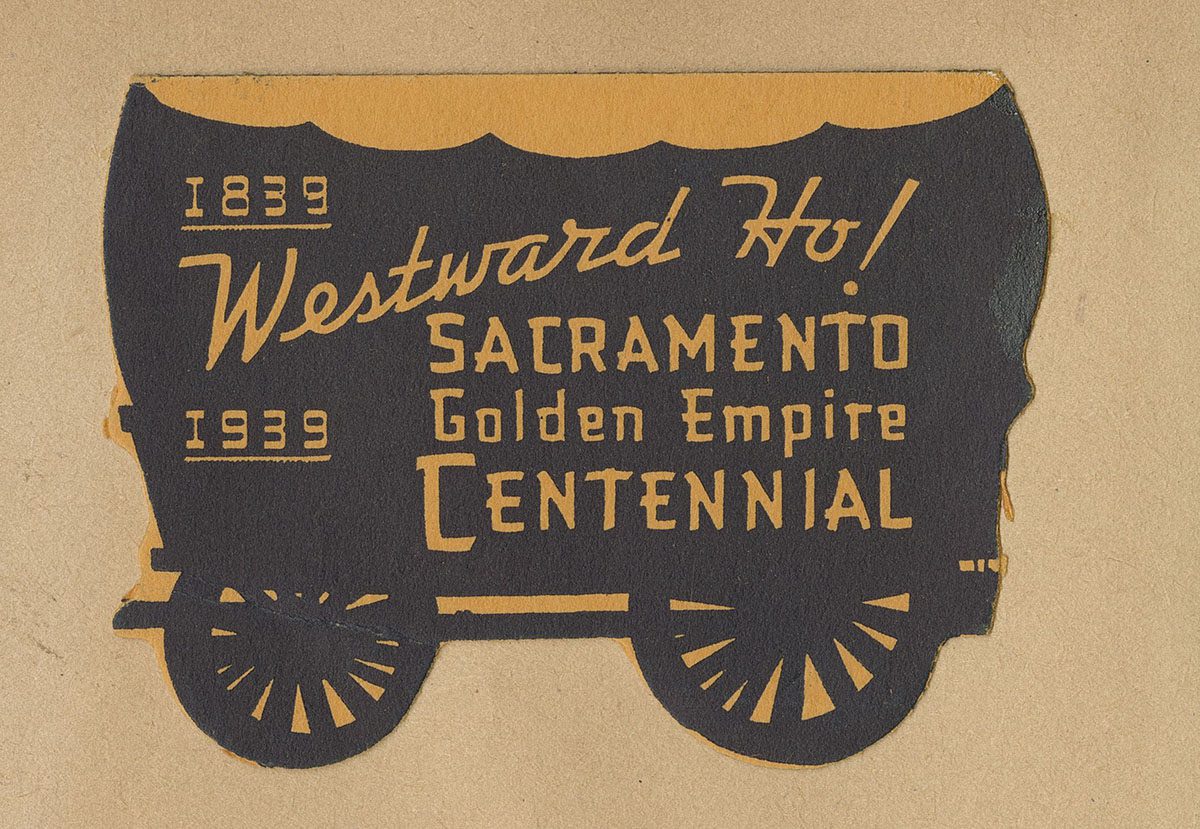
“We entered Sacramento 45 minutes later and saw many fine buildings as we drove along. Took on gas at a filling station across the street from the Governor’s mansion. Soon we were on our way to visit the Ziegler family. They insisted upon us staying for lunch and we spent a delightful afternoon with them, their children and their flowers.”
— Travelogue, Page 6/ MC318: 11

From the travelogue, we learn that the women briefly passed through Los Angeles on June 24 to go to their next stop and then fully settled in Los Angeles on June 25, 1938. The typed manuscript documents that they spent time in the city visiting various places until their event. The event, the Annual Assembly of the Supreme Council of the Order of the Amaranth, occurred from June 27-29 and they added keepsakes to the travelogue, such as a ribbon. On July 2, 1938, the travelogue indicates that the women started their trip back home to Oregon where they include more keepsakes and information about stops they made along the way. Finally, on July 7, 1938, the women indicate in their travelogue that they made it back home to Oregon, marking the end of their trip.
The rest of the travelogue recollects similar experiences with snippets of postcards, drawings, and other keepsakes that supplement the written narrative of their stops along the way.
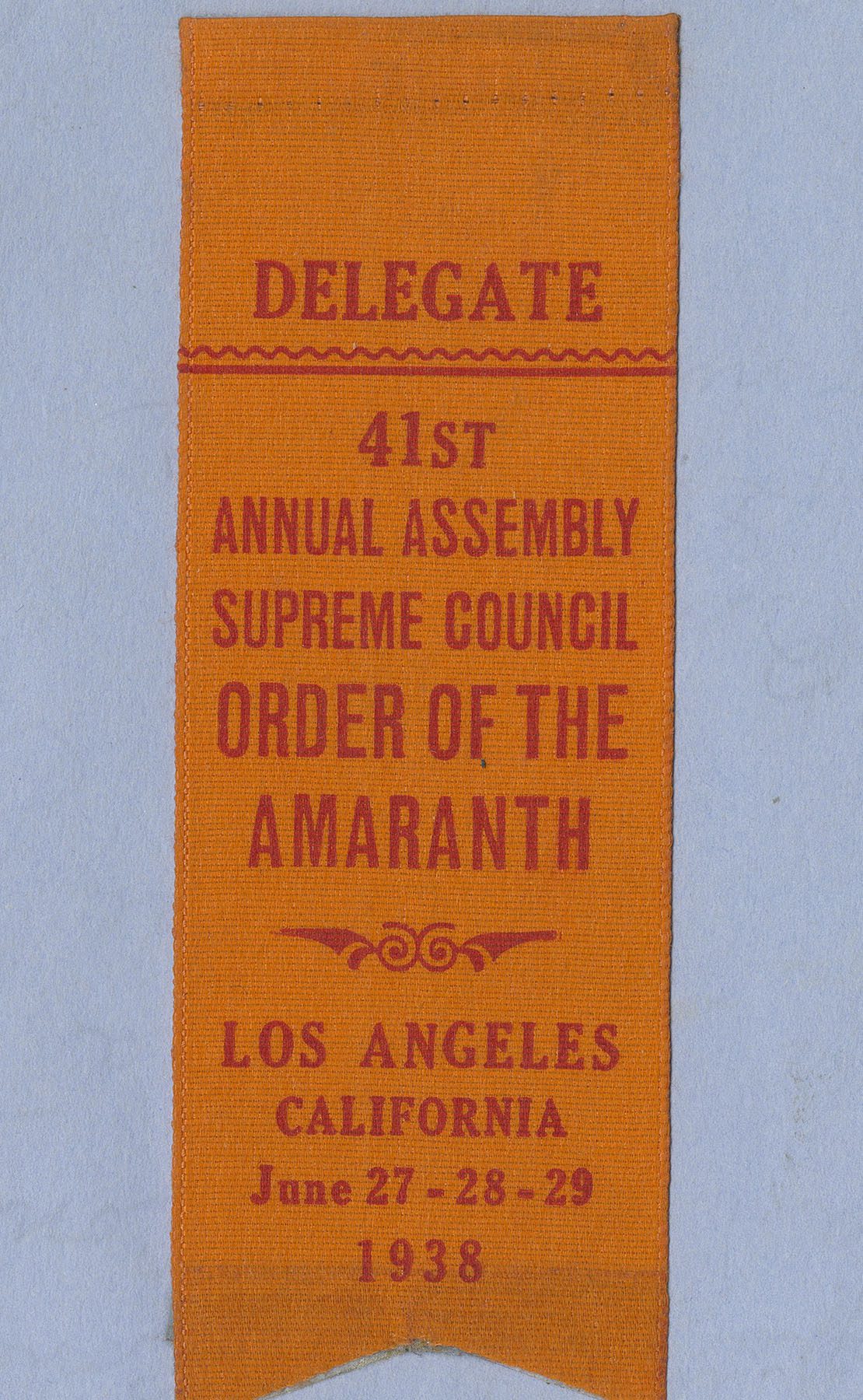
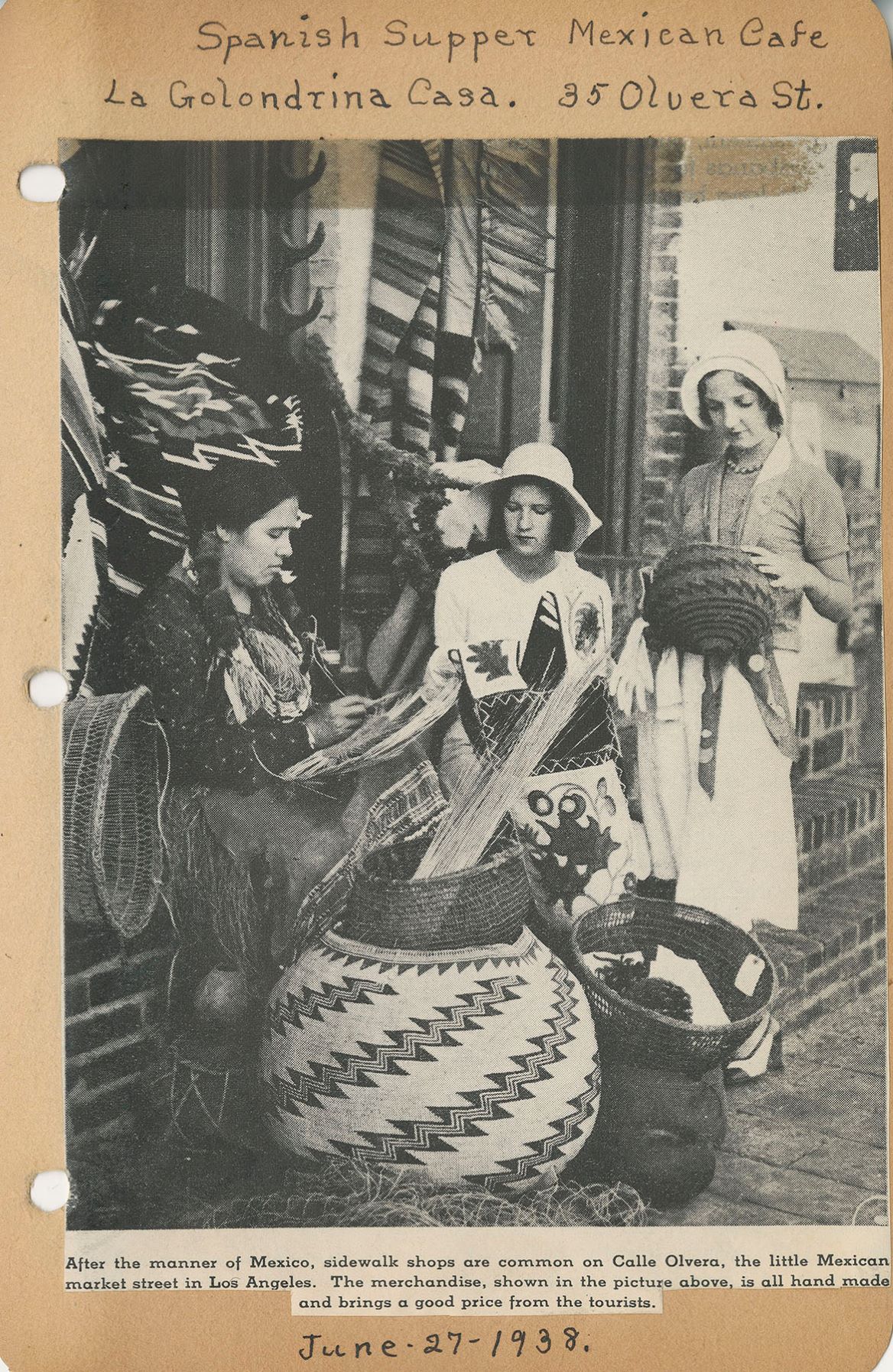
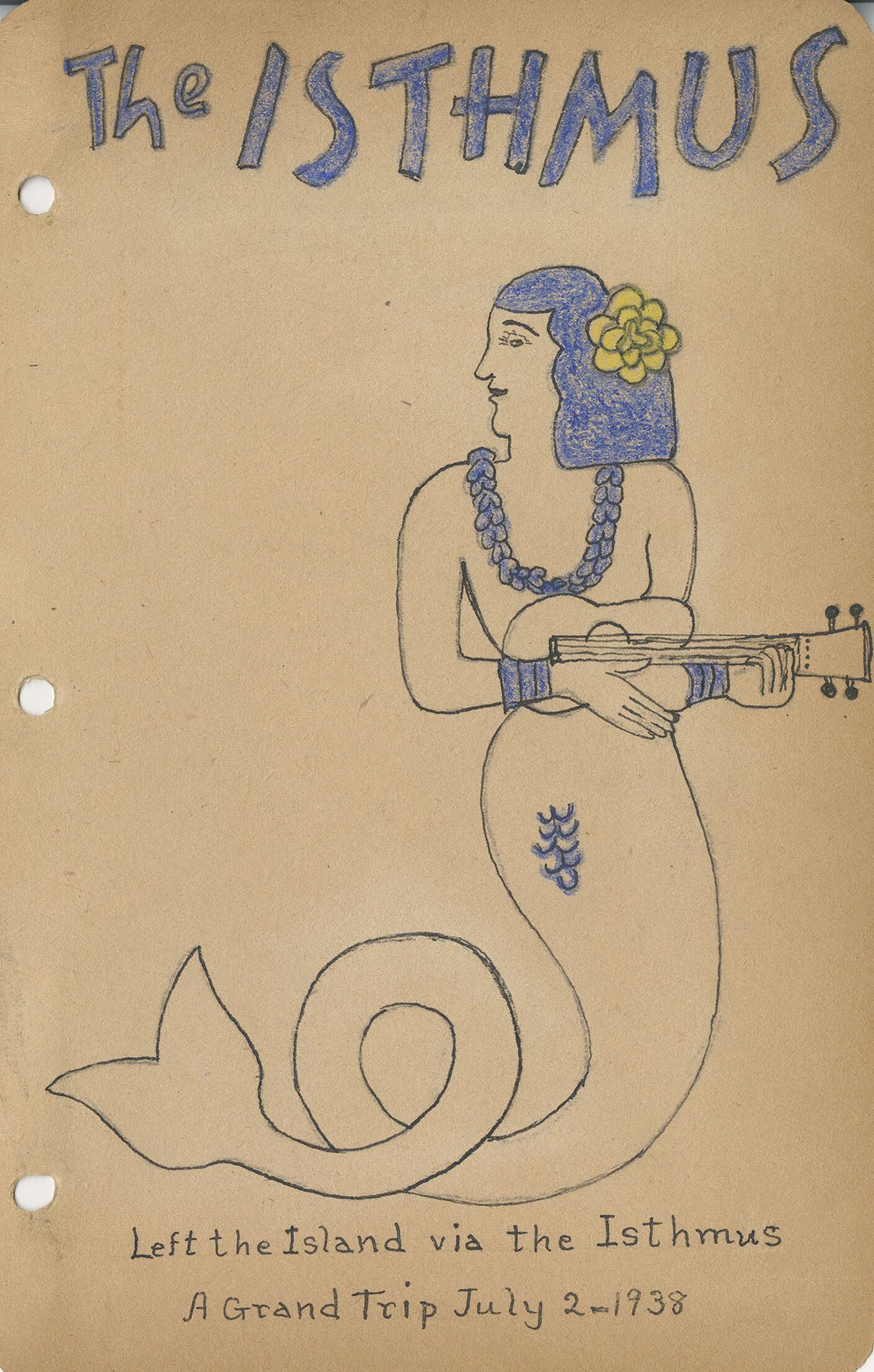
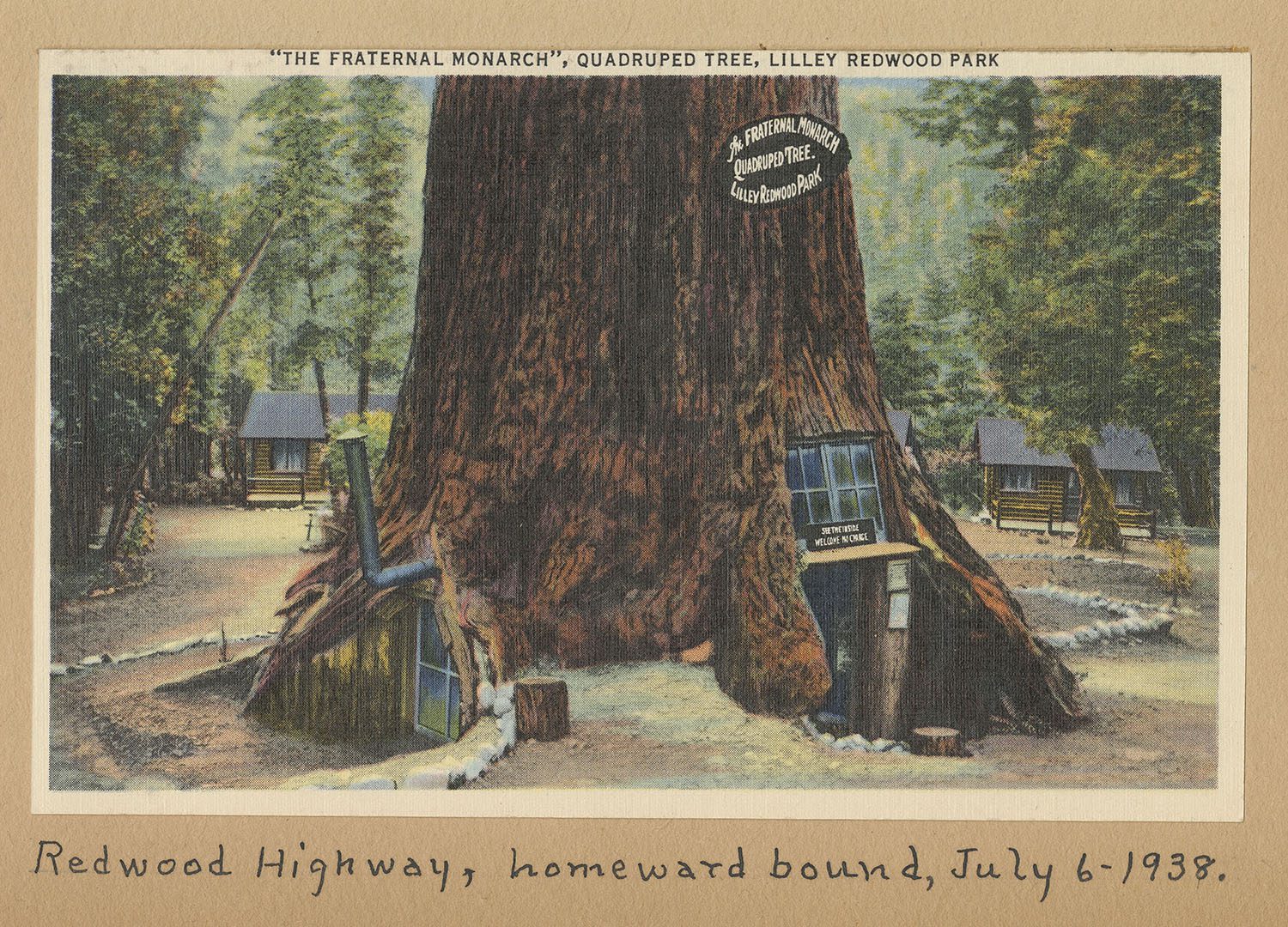
Fortunately for us, the “Supreme Brain Trustee,” Lillian, offers us a glimpse into a memorable trip in her own words, through her own eyes. Her efforts to document this trip offer a voice to the lives of these four women and it is rich with information about their experience in California in 1938.
Written accounts like this diary and travelogue help provide a voice for women where we can learn much about them. To view these collections and similar resources, visit Archives and Special Collections during open hours.